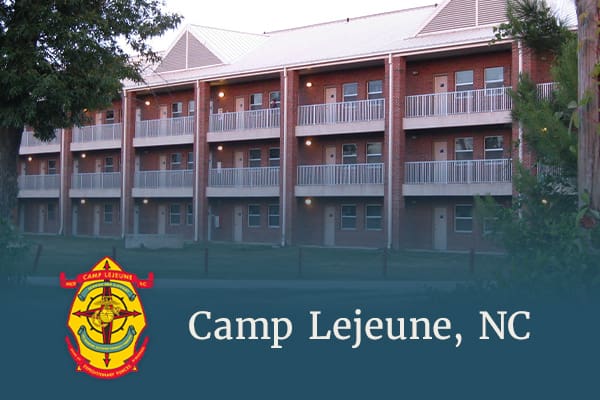01. Contaminated Water History
History of Water Contamination at Camp Lejeune
Marine Corps Base Camp Lejeune opened in September 1941 under the original name Marine Barracks New River, North Carolina. The base covers 156,000 acres with 11 miles of beach to support amphibious training exercises.
For several decades, Camp Lejeune was the site of hazardous water contamination.
Records from the Environmental Protection Agency (EPA) and the Agency for Toxic Substances and Disease Registry (ATSDR) show Camp Lejeune’s drinking water was contaminated from August 1953 to December 1987.
The contamination was discovered in 1980 during water sampling at the base. However, action was not immediately taken.
Consolidated Timeline of Contaminated Water at Camp Lejeune |
|
|---|---|
| October 1980 | The U.S. Army Environmental Hygiene Agency laboratory collected and tested water samples. The samples were characterized as “highly contaminated” in a surveillance report by the agency’s chief of laboratory services. |
| March 1981 | Three months of follow-up testing concluded. Records warned that Camp Lejeune’s water was “highly contaminated with other chlorinated hydrocarbons (solvents)!” |
| August 1982 | The Marine Corps contracted Grainger Laboratories to test the base’s drinking water. Tests again found harmful chemicals in the water. A supervisory chemist at Camp Lejeune wrote that the chemicals in the water were known to “produce liver and kidney damage and central nervous system disturbances in humans.” |
| July 1984 | Further tests were conducted. These tests sampled a well in the Hadnot Point Industrial Area of the base and found benzene levels of 380 parts per billion (ppb). Currently, the EPA’s maximum contaminant limit for benzene is 5 ppb. According to the Marine Corps, this data was not communicated until November 1984. |
Between November 1984 and February 1985, ten water wells at Camp Lejeune, including the well tested in July 1984, were shut down. All wells known to contain harmful chemicals at Camp Lejeune were taken out of commission by 1985.
A public statement on the contamination at Camp Lejeune was not made until 1997.
Safety of Camp Lejeune Water Today
Camp Lejeune’s water is safe to drink today and has been for several decades. Officials shut down the base’s most contaminated wells in 1985 and the water has been shown to be safe since 1987.
02. Chemicals Present in Water
Harmful Chemicals Present in Camp Lejeune Water
Extensive testing of Camp Lejeune’s water found several harmful chemicals known as volatile organic compounds (VOCs). The following VOCs were found in the base’s water:
- Benzene
- Tetrachloroethylene (also called perchloroethylene or PCE)
- Trans-1,2-dichloroethylene (DCE)
- Trichloroethylene (TCE)
- Vinyl chloride
Marine Corps, EPA and ATSDR records show the drinking water was contaminated between August 1, 1953, and December 31, 1987. Individuals who were present at the base for 30 or more days during this window may have experienced harmful exposure. This exposure could have led to a related disease.
What Is Benzene?
Benzene is a chemical often used in manufacturing as a starter material. That means businesses may use it to make other chemicals, dyes, lubricants, plastics and more. Crude oil, gasoline and car exhaust fumes all contain benzene. It has a slightly sweet odor and is either clear or has a slight yellow tint. It also tends to float on top of water.
Benzene can be harmful to people. The EPA has set the benzene exposure limit to 5 parts per billion (ppb). When found at Camp Lejeune, it measured 380 ppb. There are negative health effects for short-term and long-term exposure.
The International Agency for Research on Cancer has labeled benzene as a known carcinogen. Studies show that people exposed to benzene ha

